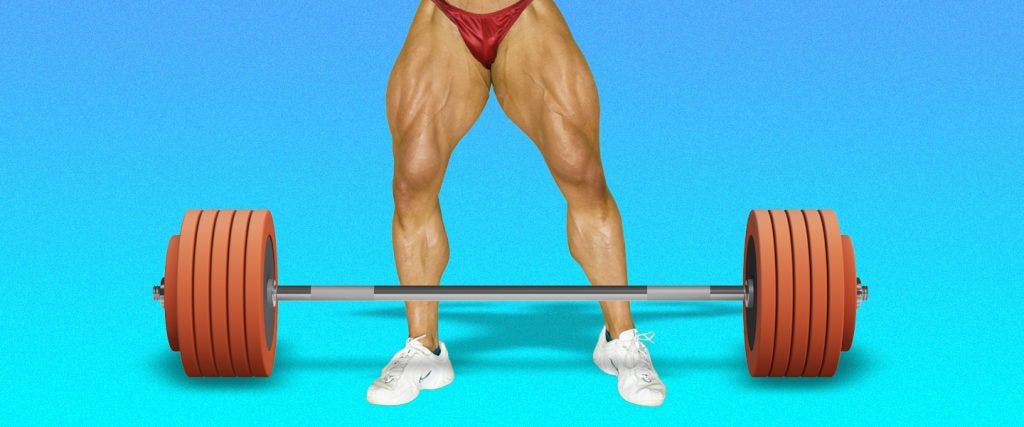For the longest time, I completely avoided squats. Chris, the biggest of the personal trainers on our staff at Bally Total Fitness, would constantly tell me to do them — and that they were the key to expanding my frame — but I’d blame my (kinda) bad knee and watch him and the other trainers knock them out without me.
But eventually, I gave in. And as Chris had told me would be the case, I very quickly put on a lot more muscle by doing a ton of squats and deadlifts. In fact, I’d done so despite having dropped all other leg exercises from my training and not changing anything else. Like it or not — and I certainly have never liked squats (or leg day for that matter) — it had become undeniable just how monumental of a difference those two fundamental closed-chain exercises (i.e., squats and deadlifts) could make.
What do squats and deadlifts do that makes them so effective at muscle-building?
For starters, squats place nearly your entire muscular system beneath a heavy weight and require you to support that weight as you press it off the ground. While all of the muscles in your body benefit to at least a small degree, your leg muscles are clearly the primary focus, especially your quads and glutes. When it comes to booty building, there’s really nothing else like it.
What’s more, the free-weight element of the squat makes it arguably the most natural testosterone booster in all of fitness. Studies have demonstrated that the amount of testosterone and growth hormone produced in the body after squatting is significantly higher than the amount generated through leg presses performed at equal intensity. Since testosterone and growth hormone influence muscle growth throughout the body, infusing a movement like squats into your workouts has been described by some as being the equivalent of adding a low dose of steroids to your body simply by throwing one essential exercise into the mix.
That’s crazy! So what about deadlifts? They look like they’re basically the same thing as squats, except the weight starts on the floor.
Looks can be deceiving, but that doesn’t mean some of the particulars of the movements aren’t similar.
When you grasp the bar and perform a standard deadlift, you’re using your entire muscular system — but primarily your posterior chain — to hoist a heavy weight off of the ground. As with the squat, you’re placing tremendous pressure on your legs and lower back, but far less emphasis is applied to your quadriceps, and substantially more work is performed by the hamstrings.
Certainly, the mechanics of the deadlift include your hands, wrists and forearms, and can help you develop sufficient grip strength to pry open any jar of pickles. However, many serious deadlifters find themselves needing to add isolated wrist-strengthening exercises to their training to prevent weakness in the wrists from becoming a limiting factor to successful deadlift completion during one-rep-max attempts.
In terms of testosterone production, at least one study indicates that heavy deadlifts cause your body to produce testosterone at levels similar to those boosted by squatting, so you can’t go wrong by doing either exercise if you’re in it largely for the hormone enhancement.
Which exercise should I do if I can only do one?
If you can only do one, I’d probably advise you to do squats. Again, they address any shortcomings you might have in your legs more directly — particularly in the beach-muscle areas — whereas a greater percentage of the deadlift burden is distributed amongst the muscles in your back. That said, save for an injury, there’s no reason why can’t make time for the both of them.
Speaking of injuries, I’ve had three of them as a direct result of squatting and deadlifting, with the original injury stemming from deadlifting with poor form, and perhaps more importantly, a stubborn early refusal to wear a weight belt.
Here’s the deal: Lift with correct form at all costs, always wear a weight belt, and for the love of God, don’t lift with your ego. Your buddies may gather round and encourage you to lift perilous amounts of weight, but they probably won’t be there to yank your near-crippled frame out from under the covers when you’re nursing a herniated disc, which is a feeling I know all too well.
So strive to impress people with the size of your legs as opposed to the size of your lifts, because if you try to do things the other way around, you may permanently deprive yourself of the ability to impress anyone.

